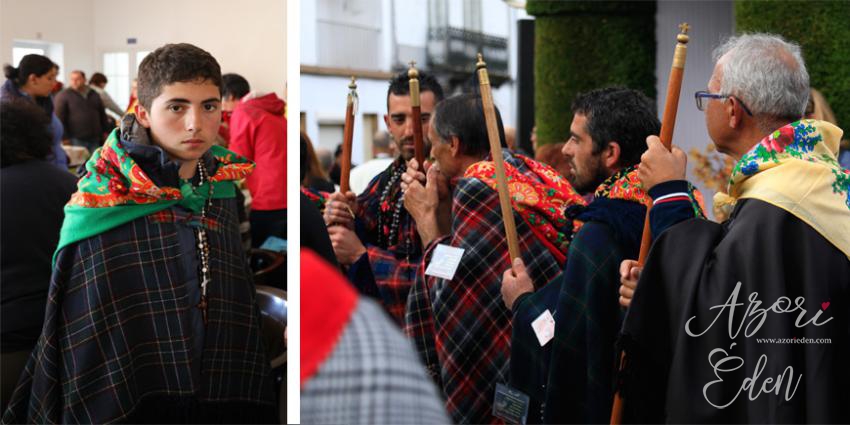The romeiros (pilgrims) of Sao Miguel – tradition, belief and emotions,
I have been having mixed feelings about the Azores and the Azorean people lately. Sometimes they are wonderfully kind and friendly, but at times they are standoffish and distant to “strangers”. There is a great deal of uncertainty and also a quote from the famous Hungarian poet Sandor Petofi comes to mind from his poem “Pato Pal Ur” (Mr. Pal Pato) which goes “Ej, raerunk arra meg” which translates into “eh, we’ll do it another time”. In some regards I find this a nice philosophy: even though things generally take longer to accomplish, the people of the Azores are much less worried and stressed out about things than people living in big and bustling cities. Whenever I am at the Azores I tend to adopt this lifestyle and when I am back to Hungary I realise how difficult it is to readjust myself to the busy city life.
However, yesterday I had an experience that affected me very deeply and made my already very positive impression about the Azorean people even more profound. I have experienced the deep spirituality of the Azorean people, their enduring faith, their love towards each other, and the closeness of their family ties through a few acts and special objects.
There is a traditional pilgrimage on Sao Miguel island which dates back to the 16th century, to 1522 when a very powerful earthquake and consecutive seismic activities shattered the city of Vila Franca do Campo. The first pilgrims started off after the earthquake to ask for God’s protection against further natural disasters and to atone for their own and every other inhabitant’s sins.
Ever since every year for a week during the months of February and March, the 10 to 50 year old male population of Sao Miguel is doing a clockwise pilgrimage around the island in groups of 30 to 200. They are visiting over 100 churches and chapels on their way, whilst praying and singing religious songs. Their dress code is strictly defined and so is the role of every individual in the group. The group has of course a leader, but there are several other offices, too. They are all wearing a checkered shawl on their backs, a colourful scarf and a rosary around their neck, whilst holding a special walking cane which they always put down on the ground before entering a church or a chapel.
The younger pilgrims are praying for better education and economy, and generally for the betterment of the Azores, and Portugal.
The pilgrimage takes one week, during which the men are walking from dawn till dusk, with no food, only to retire in the evenings into the houses of local hosts, where they are given meat and mead, and a place to sleep. There are very strict rules about qualifying to take part in the pilgrimage: the pilgrim needs to be in a great medical condition and has to lead a Godly life.






Yesterday as we were visiting Ponta Garça we have heard loud singing from a church nearby (I did not know about this custom before), so we just sat down in front of the church to wait and see what happens. And in a little while the Romeiros appeared in the door and the pilgrims went over to a house close by. We have seen that everyone is greeting the pilgrims like they were family members so I asked a very kind local girl to tell me what is happening inside. She told me that this is the family day of the pilgrimage, when the family members of the pilgrims are preparing a huge meal to be enjoyed together. Then she proceeded to invite us over to their table, but the atmosphere was so familial and intimate, I could feel the love and caring in the air, that I politely declined. I thought of my parents, whom I love very much. So finally I asked the brother of the girl, who was one of the pilgrims, if I can take a photograph. I think it turned out beautifully. Hereby I would like to thank the pilgrims and their families for their lovely welcome, and for the love they made me feel – which I still feel writing these lines.

Another thing what happened on the same day in Vila Franca do Campo, during our excursion. We were walking in the port as we noticed a ship which had the face of Jesus painted on its bow. And when we looked at it his picture it somehow reminded us of hope, and helpfulness, and love. It made me realise even better how deeply religion shapes and characterises this island.


For the latest news follow us on the Azori Éden Facebook page. For more inspiration and beautiful photos check out the Edenazores Instagram, and for comprehensive posts of course the www.edenazores.com blog.
For this article I used the information from: https://www.visitmaiazores.com/romaria
Photos: Edenazores
